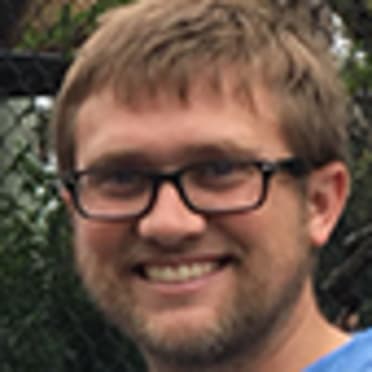5 lingering questions after the Padres' busy day
SAN DIEGO -- The stove is hot in San Diego. (And just in time for Thanksgiving, too.)
The Padres made headlines on Wednesday with moves that bolstered their outfield, rotation and bullpen.
First, they landed outfielder Trent Grisham and right-hander Zach Davies from Milwaukee in exchange for infielder Luis Urias and left-hander Eric Lauer. On the surface, it's a classic challenge trade, in which the Padres are gambling on Grisham's upside over Urias'.
Then, San Diego agreed to a deal with left-hander Drew Pomeranz to solidify their bullpen. Pomeranz struggled as a starter over the past two seasons, but after his move to the bullpen in 2019, he posted a 1.88 ERA.
“Big signing, big trade,” Padres general manager A.J. Preller said. “That helps get us toward the spot where we feel like we're putting a better team out there. But we also know that we've got work to do, and we've got a lot of different options. Today leads to a lot of possibilities for us.”
Given the Padres' needs, the moves made sense from a roster-construction standpoint. But they also raise a number of questions. Here are five of those lingering questions:
1. What's the plan at second base?
Even without Urías, the Padres have two strong in-house options to take over as the presumed “second baseman of the future.” But C.J. Abrams and Xavier Edwards -- ranked as the Nos. 45 and 72 prospects in baseball by MLB Pipeline -- are at least a couple of years away from making an impact.
So what happens in 2020? That's anyone's guess. The current options are Greg Garcia, Ian Kinsler and Ty France. It's virtually a lock that the Padres add to that mix. Garcia is a strong backup option, and France is a nice righty bat (even if he's more suited for first or third base). But none of those three seem like a viable everyday option.
Problem is, there aren't any elite second basemen available in free agency either. (The three best options are probably Didi Gregorius, Mike Moustakas and Howie Kendrick, all of whom are much better suited for other positions.) That almost certainly leaves Preller to scour the trade market over the next few months.
2. What happens in the outfield?
The shuffling is not done yet.
Grisham fills an obvious void in the righty-heavy San Diego outfield. He's a lefty bat who torched right-handed pitching in the Minors. In that sense, it's fair to expect the Padres to give Grisham regular playing time against right-handers. (He can play center field, so Manuel Margot makes sense as a platoon counterpart.)
But Grisham's role might be even bigger than that. Early indications are that the Padres are looking to trade at least one of their righty bats -- possibly Wil Myers and maybe more than just him.
The San Diego outfield might look an awful lot different next year. And there's a good chance Grisham's at the center of it.
3. Is Drew Pomeranz worth the investment?
With the Padres in 2016, Pomeranz made the National League All-Star team with a 2.47 ERA as a starter. But over the course of his nine-year career, the left-hander has been much more effective out of the bullpen. Last season, he posted a 1.88 ERA in 28 relief appearances compared with a 5.97 mark in the rotation over 18 starts (75 1/3 innings).
San Diego’s commitment to Pomeranz is a risky one. But here’s the basis for it: Pomeranz has made 102 career appearances in relief. He owns a 2.72 ERA with a 10.9 K/9 rate and a 1.089 WHIP. That’s what the Padres believe they’re paying for.
If Pomeranz can be that version of himself, he’d be a strong addition to an already-stellar bullpen in San Diego. Pomeranz joins José Castillo and Matt Strahm as lefty leverage options, as well as flame-throwing right-hander Andres Muñoz as the bridge to closer Kirby Yates.
4. What does Davies-for-Lauer mean in the rotation?
It's a calculated gamble by Preller. Davies -- who sports a 3.91 ERA over five big league seasons -- has a much better track record, and he's pitched well on some very good Brewers teams. But the 26-year-old right-hander has only two years remaining before he hits free agency. Lauer has five.
In that sense, the Padres recognized an immediate need for rotation help, with the caveat that they feel their farm system will keep them well-stocked in 2022 and beyond.
Davies currently projects as one of the final three starters in a rotation headlined by Chris Paddack and Garrett Richards. But the Padres could still search for a front-line option, and that would thrust Davies into a competition for a starting job with, say, Dinelson Lamet, Joey Lucchesi and Cal Quantrill.
5. What does this mean for Preller's win-now mandate?
Grisham-for-Urias doesn't change much. The Padres plugged one hole with a promising young bat. But they created another by trading a promising young bat. Now, Preller needs to find a second baseman.
But the additions of Davies and Pomeranz certainly move the needle forward a bit. Davies is a more reliable rotation option for 2020, even if Lauer is projected for more long-term value over the duration of his contract. The Padres needed starting pitching depth, and Davies helps solidify things at the back end of their rotation.
Meanwhile, the Pomeranz signing signals a clear run at contention in 2020. He's already 31, and he's been brought on board to give an already solid bullpen an instant boost. The cost may have been steep. But it's the type of move a contender makes to protect itself from the year-to-year volatility of relievers.
